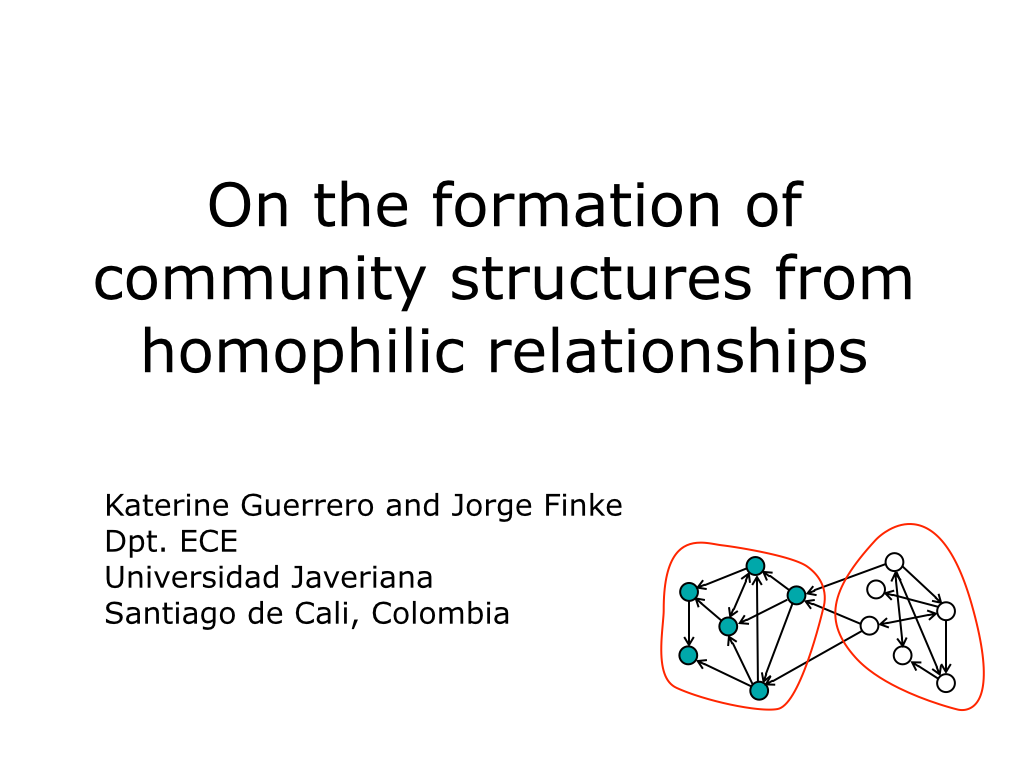
On the Formation of Community Structures
(Presented at the American Control Conference in Montréal, Canada)
Many real-world networks consist of numerous interconnected groups which, as communities, display distinctive collective behavior. The division of a network into communities – groups of nodes with a high density of ties within but a low density of ties between groups – underlies the structure of social and technological networks. In human communities, for instance, individuals may group together according to special interest, occupation, intent, or belief, with tendency to establish stronger ties with individuals who are similar to themselves. Here, we introduce a formal framework for the formation of community structures from homophilic relationships between individuals. Stochastic modeling of local relationships allows us to identify a wide class of agent interactions which lead to the formation of communities and quantify the extent to which group size affects the resulting structure.
[gview file=”SlidesACC12.pdf”]